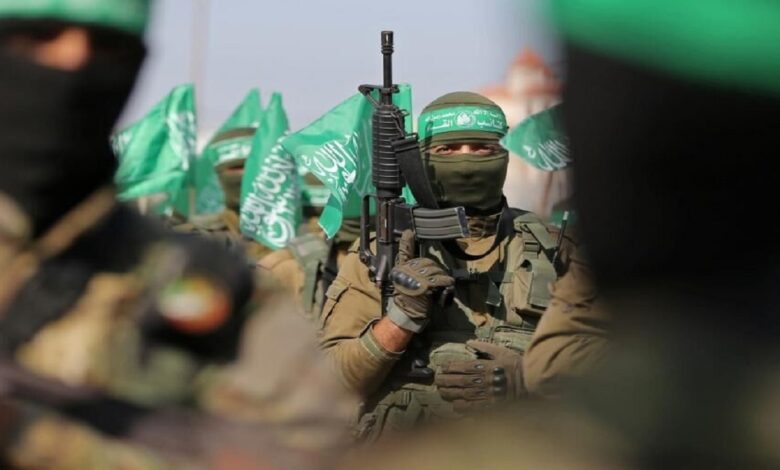The New York Times’ account of Al-Qassam’s special tactics that have grounded Israel

[box type=”shadow” align=”” class=”” width=””]By examining the war tactics of Hamas against the Zionist regime, an American media wrote that by weakening the occupying army, this movement is advancing its main goal and it is unlikely to defeat it.[/box]
An American media in a report referring to the urban war tactics of Hamas against the Zionist regime in Gaza, including through tunnels, traps and shelters, pointed out that this group has resisted for months. Palestine’s resistance against the extensive military operations of the occupying regime has been helped by the extensive military assistance of its military allies.
The New York Times report states: “Ezzedine al-Qassam” battalions of the military wing of Hamas during the eight months of the Gaza war, in contrast to the October 7 operation (Operation Al-Aqsa Storm) in Israel, which was carried out with extensive maneuvers of uniformed rangers and their attacks on border cities. It has been operating as a decentralized and mostly secret force.
Instead of confronting the Zionist regime’s attack, which led to direct battles, most Hamas fighters retreated from their headquarters and bases in order to weaken the technological superiority of the occupying army through surprise attacks.
According to this report, the shadow army of Hamas from underground has only had an immediate and sudden presence from the shelter of the tunnels and has often been armed with RPGs to target the Zionist soldiers and then immediately return to its underground fortifications.
Most of the Hamas fighters, instead of confronting the attack of the Zionist regime, which led to direct battles, retreated from their headquarters and bases in order to weaken the technological superiority of the occupying army through surprise attacks.
This article continues: Despite the killings in Gaza, the strategy of Hamas has helped this group achieve some of its goals.
The New York Times wrote that this war has tarnished the alleged credibility of the Zionist regime in a large part of the world and has caused charges, including genocide, to be brought against it in the International Court of Justice in The Hague.
This issue has also deepened long-standing divisions in the society of the occupied territories, and as a result, differences of opinion have arisen about how to defeat Hamas by the Zionist regime and its necessity.
This war caused the issue of Palestine becoming a state to be raised once again in the world discourse, and some of the governments of the world also recognized Palestine as a country.
The New York Times pointed out that “Hamas’ war doctrine has made its survival possible”, and wrote: “Yahya Sanwar”, the head of Hamas’s political office in Gaza, and most of his top military commanders are still alive. Israel says it has killed more than 14,000 of the 25,000 Hamas fighters; This is an unverifiable and disputed statistic that, if true, suggests that thousands of them are still active.
In this article, referring to the explanations of Salah al-Awdeh, a member of Hamas and one of the former fighters of its military branch, who is currently an analyst in Istanbul, he was quoted as saying: “The goal is to disappear and avoid direct conflict.” And at the same time, there are tactical attacks against the occupying army. The emphasis is on patience. Al-Qassam battalions operated as an army with training bases and reserves. But during this war, their activity is guerilla”.
The war doctrine of Hamas has made its survival possible
Moussa Abu Marzouq, one of the senior officials of Hamas in Qatar, rejected the claims about the Palestinian forces using civilian disguises and storing weapons in civilian homes, and said that this diverts attention from Israeli crimes.
>
He says, “If someone pulls a gun out from under the bed, is that a justification for killing 100,000 people? If someone pulls out a weapon from under a bed, is that a justification for killing an entire school and destroying a hospital?”
Al Awadeh says: In every uprising, in every war, from Vietnam to Afghanistan, people have fought in their homes. For example, if I live in Al-Zaytoun neighborhood and the army arrives, I will fight them from there or from my neighbor’s house or from the mosque. Wherever I am, I will fight them from there.
He further said: In a legitimate action and to avoid detection, Hamas forces wear civilian disguises. This is normal for a movement with the aim of resistance, and there is nothing unusual about it.
In another part of this article it is stated: Dozens of Hamas propaganda videos published by the group on social media channels show small groups of Hamas fighters wearing jeans, sweatpants, sandals and sneakers walking through tunnels to They run towards Israeli tanks and personnel carriers to lay mines near the tank turret, shoot RPGs from buildings and shoot Israeli soldiers with snipers.
According to Al-Awodeh, “Hamas has been preparing for this moment since at least 2021 by increasing the production of ammunition and anti-missile tanks and reducing the production of long-range rockets”.
In the continuation of this article according to the statement of this Hamas official: Hamas has also created a wide network of tunnels. The tunnel network has underground phone lines that are difficult for Israel to monitor, enabling fighters to communicate with Gaza’s Israeli-controlled mobile phone network even during power outages.
Now after 9 months, the authorities of the Zionist regime say that they have destroyed only a small part of this network and the existence of these tunnels has become an obstacle in the way of its army to destroy Hamas.
Al-Awodeh said about the level of preparation of Hamas forces: Hamas rangers have also been trained to maintain readiness and focus even during the shortage of food and water. Before the war, fighters were sometimes ordered to go days without food and with only a few dates to remain motionless for several hours, even as instructors splashed water in their faces to distract them.
According to him, with the evacuation of large areas of Gaza in October, Hamas fighters set explosive traps in hundreds of houses where they expected the Zionist forces to enter. These mines were connected to trap wires, motion sensors, and sounders, which activated explosive materials as soon as they received the effect of a trigger. Then the fighters entered the tunnels and waited for the Zionists to arrive.
In another part of this article, it is stated: In the best planned traps, by allowing the Zionist forces to move freely for hours and days in some areas that were designated for attack, Hamas created a false sense of security in them. /p>
Hamas fighters and soldiers of the Zionist regime say that Hamas used hidden cameras, drones and civilian surveillance to identify the location of the occupying army forces.
6 Israeli soldiers and a Hamas officer said that Hamas ambush forces usually hide until a Zionist military convoy moves in an area for a few minutes or the Zionist forces gather in a particular place for hours to create the impression that they are Hamas has left that area. After a period of calmness, Hamas units appear from a tunnel, usually in groups of four.
According to Al-Awodeh, 2 Hamas fighters undertake the task of placing explosive ammunition on both sides of a car or firing anti-tank missiles. The third person carries a camera to record the film. The fourth fighter usually stays at the entrance of the tunnel and prepares an explosive trap that can detonate as soon as the others return and kill the Zionist soldiers who try to enter the tunnel behind them.
This Hamas official and the Zionist soldiers who have had the experience of being caught in these traps say that a well-planned trap does not only aim to kill the first soldier, but also to eliminate the support forces that are needed to rescue the wounded. They come.
One of the members of the special forces of the Zionist regime narrates how a group of Hamas fighters were in a position so that the supporting forces of the Zionist regime were forced to shoot from among their comrades and injure them as well.
>
In the final part of this article, it is stated: Even in the areas where the Zionist regime claims to have defeated Hamas, often, weeks and months later, the forces of the occupying army have been forced to return to continue fighting with the survivors of the first stages of the war.
Andreas Creek, an expert in the field of military strategy at King’s College London, says, “For Hamas, it has always been about avoiding casualties as much as possible for one more day of fighting. They are unlikely to be defeated.”
| © | Webangah News Hub has translated this news from the source of Young Journalists Club |
[is_logged_in] Link [/is_logged_in]
|


